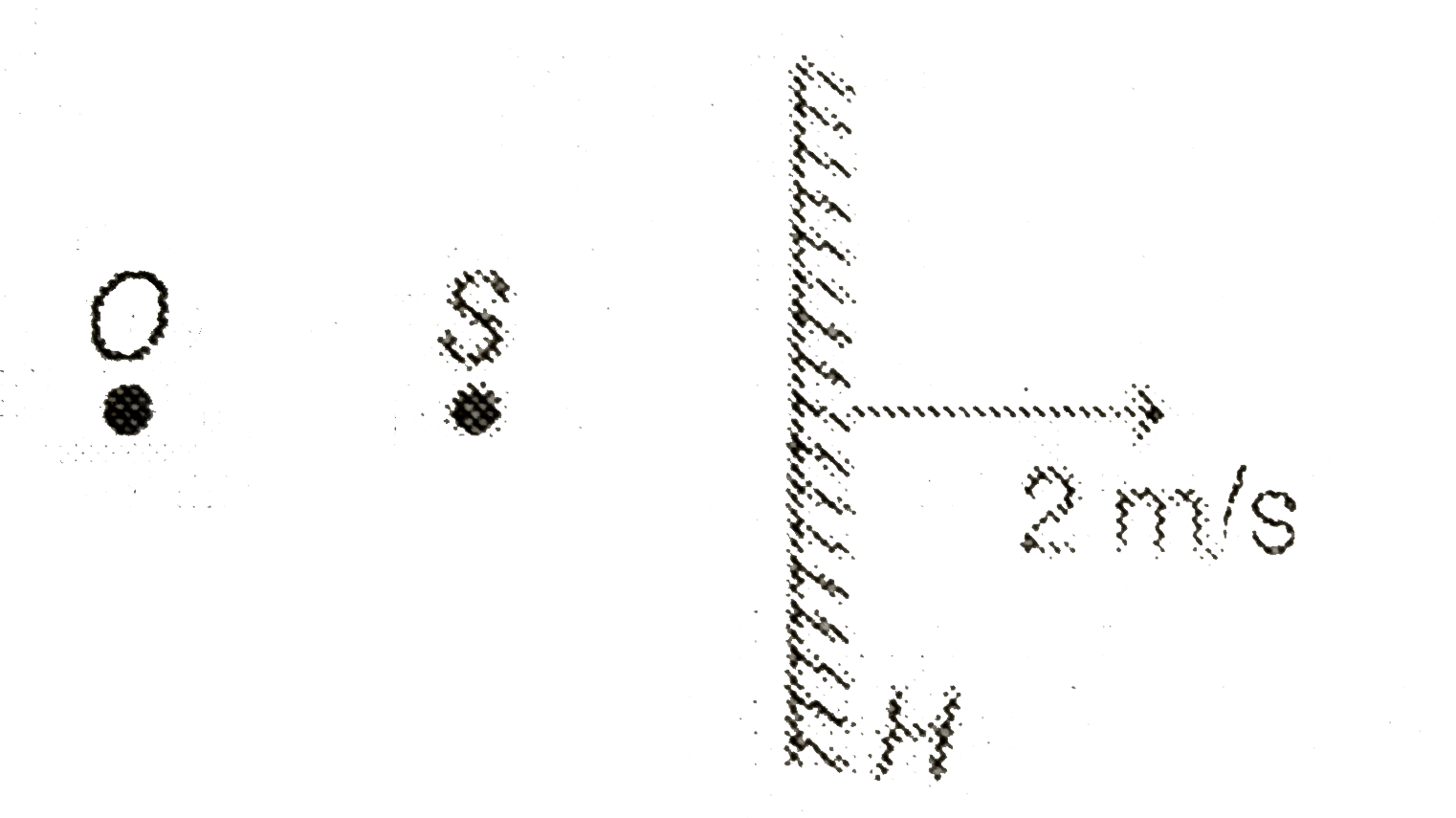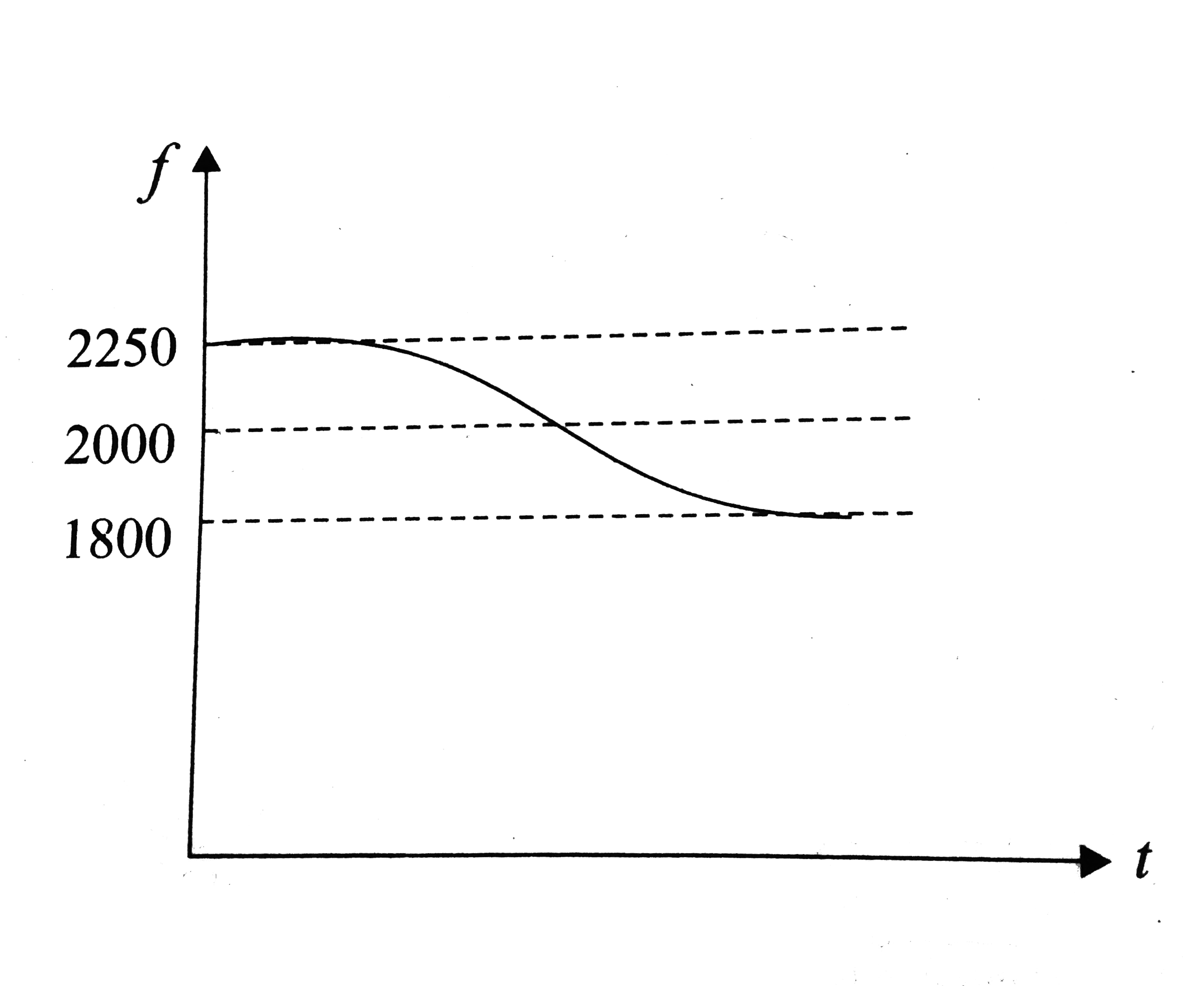A stationary source emits the sound of frequency f0=492 Hz. The sound is reflected by a large car approaching the source with a speed of 2ms−1. The reflected signal is received by the source and superposed with the original. What will be the beat frequency of the resulting signal in Hz? (Given that the speed of sound in air is 330ms−1 and the car reflects the sound at the frequency it has received).
The correct Answer is:6
To solve the problem, we will use the Doppler effect to find the frequency of the sound as it is reflected by the moving car and then calculate the beat frequency.
1. Identify Given Values:
- Frequency of the source, f0=492Hz
- Speed of the car, vc=2m/s
- Speed of sound in air, v=330m/s
2. Calculate the Frequency Received by the Car:
The frequency f′ received by the car can be calculated using the Doppler effect formula when the source is stationary and the observer (the car) is moving towards the source:
f′=f0⋅v+vcv
Substituting the values:
f′=492⋅330+2330
f′=492⋅332330
f′≈492⋅1.00606≈495.0Hz
3. Calculate the Frequency of the Reflected Sound:
The car reflects the sound at the frequency it has received. Therefore, the frequency f′′ emitted by the car is the same as f′:
f′′=f′≈495.0Hz
4. Calculate the Beat Frequency:
The beat frequency fb is the absolute difference between the original frequency f0 and the frequency of the reflected sound f′′:
fb=|f′′−f0|
Substituting the values:
fb=|495.0−492|=3.0Hz
5. Final Answer:
The beat frequency of the resulting signal is 3Hz.
- Frequency of the source, f0=492Hz
- Speed of the car, vc=2m/s
- Speed of sound in air, v=330m/s
The frequency f′ received by the car can be calculated using the Doppler effect formula when the source is stationary and the observer (the car) is moving towards the source:
f′=f0⋅v+vcv
Substituting the values:
f′=492⋅330+2330
f′=492⋅332330
f′≈492⋅1.00606≈495.0Hz
The car reflects the sound at the frequency it has received. Therefore, the frequency f′′ emitted by the car is the same as f′:
f′′=f′≈495.0Hz
The beat frequency fb is the absolute difference between the original frequency f0 and the frequency of the reflected sound f′′:
fb=|f′′−f0|
Substituting the values:
fb=|495.0−492|=3.0Hz
The beat frequency of the resulting signal is 3Hz.
Topper's Solved these Questions
- WAVE MOTIONBOOK - VMC MODULES ENGLISHCHAPTER - WAVE MOTIONEXERCISE - JEE ADVANCED ARCHIVE LEVEL 2 (FILL IN THE BLANKS)
17 Videos
- WAVE MOTIONBOOK - VMC MODULES ENGLISHCHAPTER - WAVE MOTIONEXERCISE - JEE ADVANCED ARCHIVE LEVEL 2 (TRUE FALSE TYPE)
4 Videos
- WAVE MOTIONBOOK - VMC MODULES ENGLISHCHAPTER - WAVE MOTIONEXERCISE - JEE ADVANCED ARCHIVE LEVEL 2 (MATRIX MATCH TYPE)
3 Videos
- UNITS, MEASUREMENTS & ERRORSBOOK - VMC MODULES ENGLISHCHAPTER - UNITS, MEASUREMENTS & ERRORSEXERCISE - IN - CHAPTER EXERCISE - B
10 Videos
- WORK ENERGY AND POWER BOOK - VMC MODULES ENGLISHCHAPTER - WORK ENERGY AND POWER EXERCISE - IMPECCABLE
54 Videos
Similar Questions
Knowledge Check
A stationary source is emitting sound at a fixed frequency f0, which is reflected by two cars approaching the source. The difference between the frequencies of sound reflected from the cars is 1.2% of f0. What is the difference in the speeds of the cars (in km per hour) to the nearest integer ? The cars are moving at constant speeds much smaller than the speed of sound which is 330ms−1.
A2B3C5D7
A car is moving with 90kmh−1 blows a horn of 150 Hz, towards a cliff. The frequency of the reflected sound heard by the driver will be (speed of sound in air is 340ms−1 )
View SolutionA source and a detector move away from each other, each with a speed of 10ms−1 with respect to the ground with no wind. If the detector detects a frequency 1950 Hz of the sound coming from the source, what is the original frequency of the source? Speed of sound in air =340ms−1.
View SolutionA stationary sound sound 's' of frequency 334 Hz and a stationary ovserver 'O' are placed near a reflecting suface moving away from the source with velocity 2 m/s as shown in the figure. If the velocity of the sound waves is air is v= 330 m/s the apparent frequency of the echo is

View SolutionTwo cars A and B are moving away from each other in opposite directions. Both the cars are moving with a speed of 20ms−1 with respect to the ground. If an observer in car A detects a frequency 2000 Hz of the sound coming from car B, what is the natural frequency of the sound source in car B? (Speed of sound in air =340ms−1)
View Solution
A statinary observer receives a sound of frequency 2000 Hz. The variation of apparent frequency and time is shown. Find the speed of source, if velocity of sound is 300ms
View SolutionAt what speed should a car approach a stationary observer if the hears the music of the car radio with a frequency 20% higher than it actully is ? The speed of sound is 340ms−1
View SolutionThe driver of a car travelling with speed 30ms−1 towards a hill sounds a horn of frequency 600 Hz. If the velocity of sound in air is 330ms−1, the frequency of reflected sound as heard by driver is
View Solution
